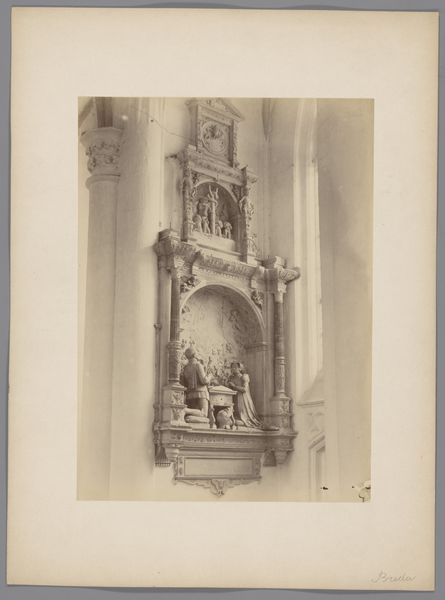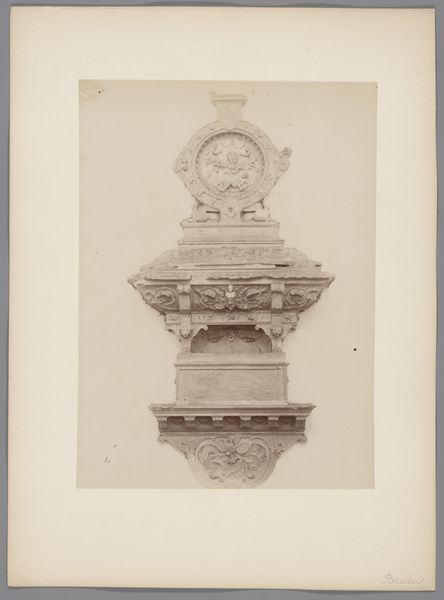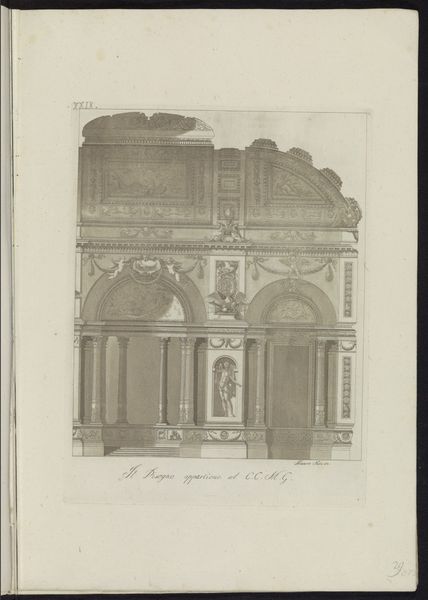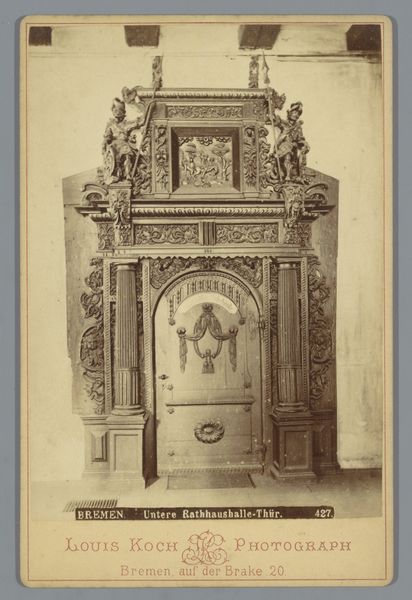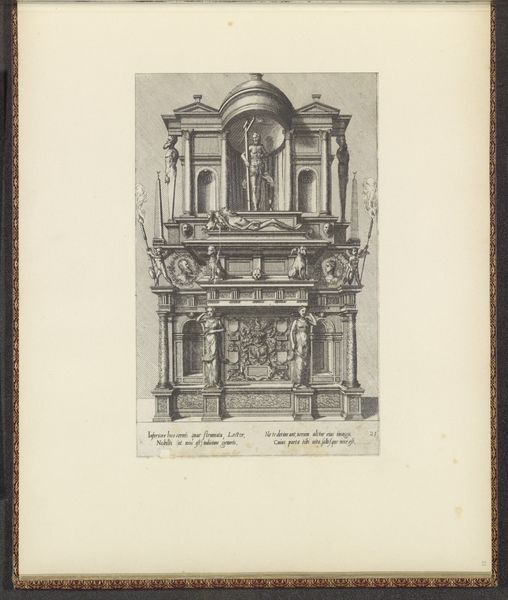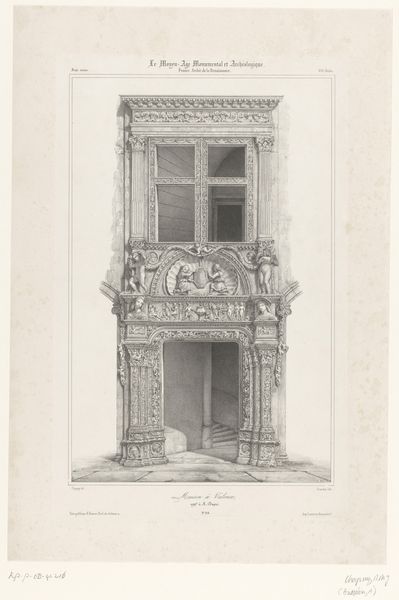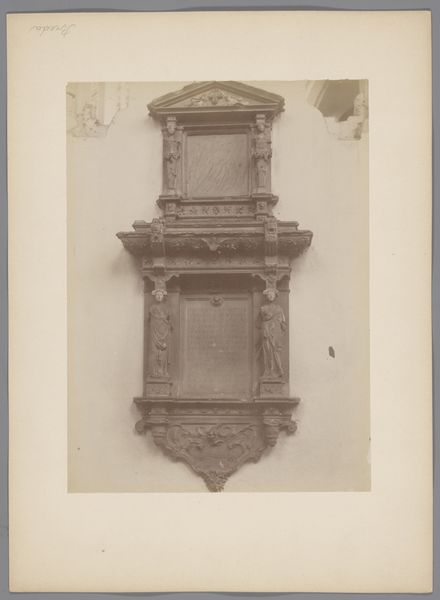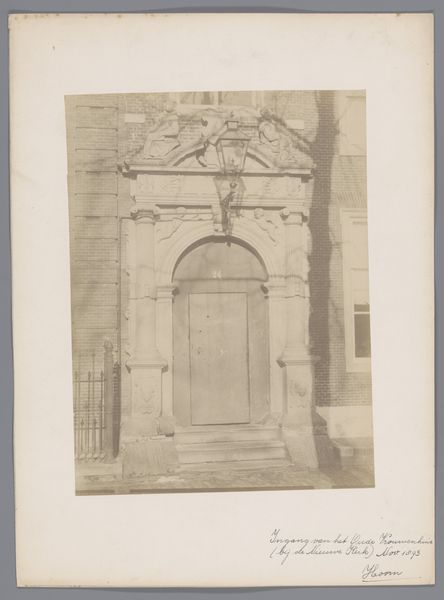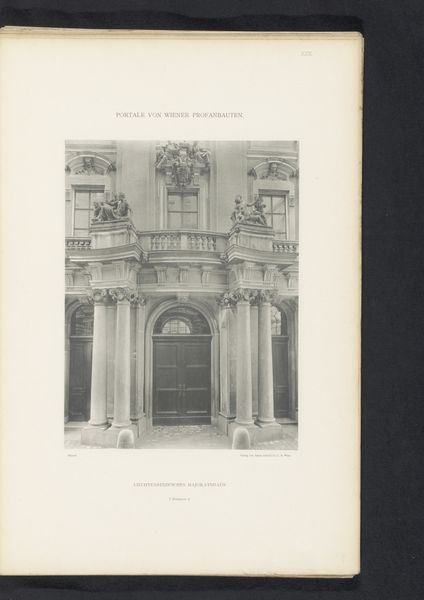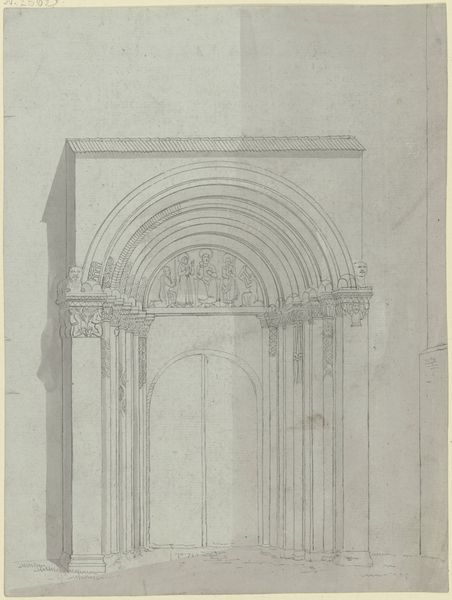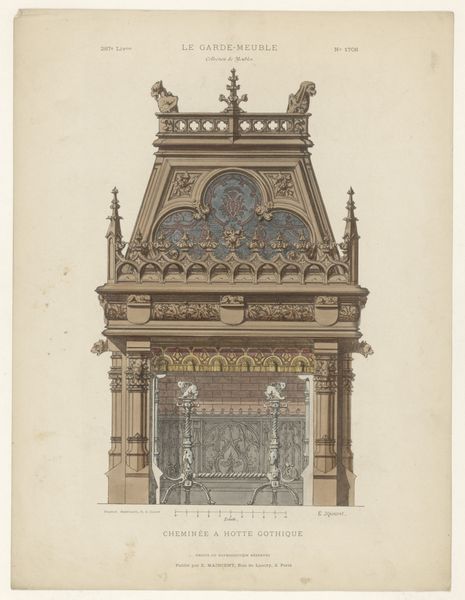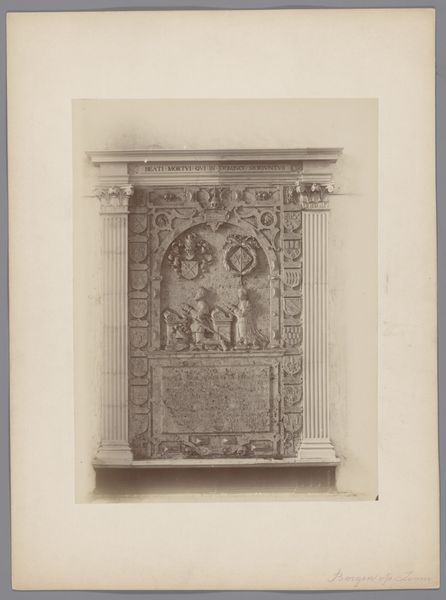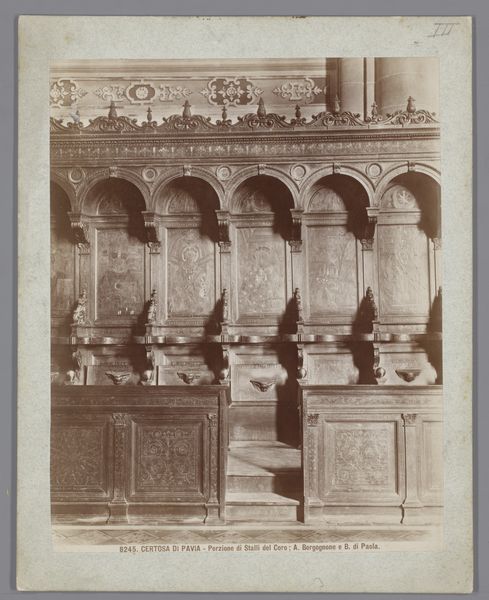
Dimensions: height 233 mm, width 163 mm
Copyright: Rijks Museum: Open Domain
Editor: Here we have a photograph of the "Epitaph of Dendermonde in the Grote Kerk in Breda," dating from somewhere between 1890 and 1920 and attributed to Monumentenzorg. The somber tones and architectural detail give it an air of faded grandeur. What do you see in it? Curator: Well, first, the symbols leap out at me. Epitaphs are, after all, heavily laden with them. This one uses classical architectural forms to frame remembrance. Notice the cartouche, the round or oval shape? Editor: Yes, at the top. Curator: These shapes, often bearing coats of arms or portraits, became fashionable in the Renaissance. The overall symmetry and clarity speak of order and hierarchy. It’s meant to endure, both as art and as memory. I wonder, what sort of psychological comfort do you think viewers find in these gestures? Editor: It’s a public way of coping with grief, I suppose. Of enshrining the individual in something lasting. Almost like an attempt to transcend mortality. Curator: Exactly! But notice too the use of shadow and light in the photograph. What effect does that have on our interpretation of the epitaph itself? Editor: It highlights the depth and texture. It gives it a real sense of presence, but also emphasizes its age and, perhaps, its slow decay. Curator: A keen observation. Perhaps we are seeing a symbolic representation of the transience of earthly things juxtaposed with the enduring nature of memory. Editor: That’s fascinating. I had initially just thought about it in terms of the classical elements, but you have shown me so much more! Curator: It just shows you the power of symbolism, reflecting how we grapple with big concepts like life, death and remembrance.
Comments
No comments
Be the first to comment and join the conversation on the ultimate creative platform.
